Review: Eduard 1/48 Spitfire Vb (late) EP120
The Airplane:
With the arrival of the Fw 190 in August 1941 the Spitfire Vb was outclassed in everything but turning radius. As Al Deere said, “Turning doesn't win battles!” In an effort to counter the Fw-190 threat at lower altitudes, where the Spitfire Vb was competitive many of the Sptifire Vbs had their wingtips “clipped,” reducing wingspan to 32 ft 2 in. This increased both roll rate and airspeed at lower altitude. These “clipped Spits” used the Merlin 45M which had a smaller "cropped" supercharger impeller and boost increased to +18 lb, producing 1,585 hp at 2,750 ft and increasing rate of climb to 4,720 ft/min at 2,000 ft. In this configuration, the Spitfire Vb continued to be used by Fighter Command until all were replaced in frontline units early in 1944.
Spitfire VB EP120
Spitfire Vb EP120 is probably the most famous Spitfire used by the RCAF still in existence. Built at Castle Bromwich in 1942, EP120 originally went to 501 Squadron on June 4, 1942, where she flew in support of the Dieppe raid. During one of these missions, Wing Commander Patrick Gibbs, flying EP120, shot down a Do217.
On September 9, 1942, EP120 was transferred to 19 Squadron, and on April 22, 1943, she was assigned to 402 Squadron RCAF, becoming the personal mount of the Officer Commanding, Manitoba native Squadron Leader Geoffrey Northcott, DSO, DFC and Bar.
Northcott was credited with nine victories total and achieved six of them while flying EP120. The first victory was scored on June 27, 1943, when 402 escorted Beaufighters against a German convoy off the Dutch coast. Northcott achieved this first kill against a Bf 109, earning his first DFC in the process.
Leading the squadron on an escort mission on August 2, Northcott shot down two more Bf 109s, earning a bar to his DFC.
On August 22 while escorting USAAF B-26s, Northcott shot down a Fw 190, shooting down a second on September 4. On October 3, he damaged a Bf 109, and on October 24, shot down a third Fw 190 for EP120's seventh kill.
EP120 was damaged on February 12, 1944, and was returned to Castle Bromwich for repairs that were completed June 8. EP120 then served with various training units for the rest of the war before being grounded as an instructional airframe in June 1945. During the 1950s, the Spitfire became a “gate guardian” until 1968 when she was used as a static aircraft in the movie “Battle of Britain.” She served again as a gate guard until removed in 1988 when plastic “Spitfires” were created to save the originals, which had fallen victim to the environment over the years.
EP120 was purchased by The Fighter Collection in 1993 and restored by Historic Flying at Audley End. Following restoration, EP120 flew again for the first time on September 12, 1995 and is still flown wearing Northcott's markings from her 402 Squadron RCAF days. With seven victories credited, EP120 is probably the most successful Second World War aircraft in existence still flying.
The Kit
Eduard Profipack kit 82156 is a 2022 re-release of Edurd's well-regarded Spitfire Vb (late) kit. The kit includes decals for six interesting markings not “done to death,” including for EP120.
Construction:
Remember that the kit design is very precise, and ham-handedness will guarantee a less-than-desired result. All sprue nibs need to be trimmed off and the mating surface smoothed, and no paint on those surfaces. Take your time, follow the instructions, and you will get a nice result.
I deviate from Eduard's assembly instructions by not completely assembling the wing separately and then mating it to the assembled fuselage. Rather, I assemble all the wheel well in the lower wing part, then I attach that to the assembled fuselage, getting a good tight fit to the fuselage fore and aft of the wing. Then I attach the upper wing, getting a good tight fit at the wing-fuselage joint, and then gluing the outer wing to the lower wing part. If you do it this way, there is no pushing and shoving to get a less-than-optimal fit, and no use of putty anywhere.
Of note, all Spitfire Vs used the paper laminate seat, which is painted brown, with a black leather back pad.
Colors and Markings
I used Tamiya's RAF colors, XF-81 RAF Dark Green, XF-82. RAF Ocean Grey and XF-84, RAF Sea Grey Medium. The spinner and fuselage band were done with XF-21 “sky” lightened to the proper shade with white added 1:3 (The OOB color is too dark). The scheme was applied freehand.
Eduard's decals were used as standard decals, none of the “peel off” business. They melt down just like every other decal you've ever used under a coat of Solvaset, and there's no chance of wrecking the decal pulling it up in the process of peeling off the clear backing.
I unmasked the canopy and positioned it open, then attached the landing gear, exhausts and prop and called it done.
Conclusions:
Eduard's Spitfires are the best kits of this famous airplane available in 1/48 scale. The kit design is superb and if you follow the instructions (adding in my little trick about assembling the wing) you are guaranteed of a good model that will look great with paint and decals applied. Recommended for any experienced modeler.
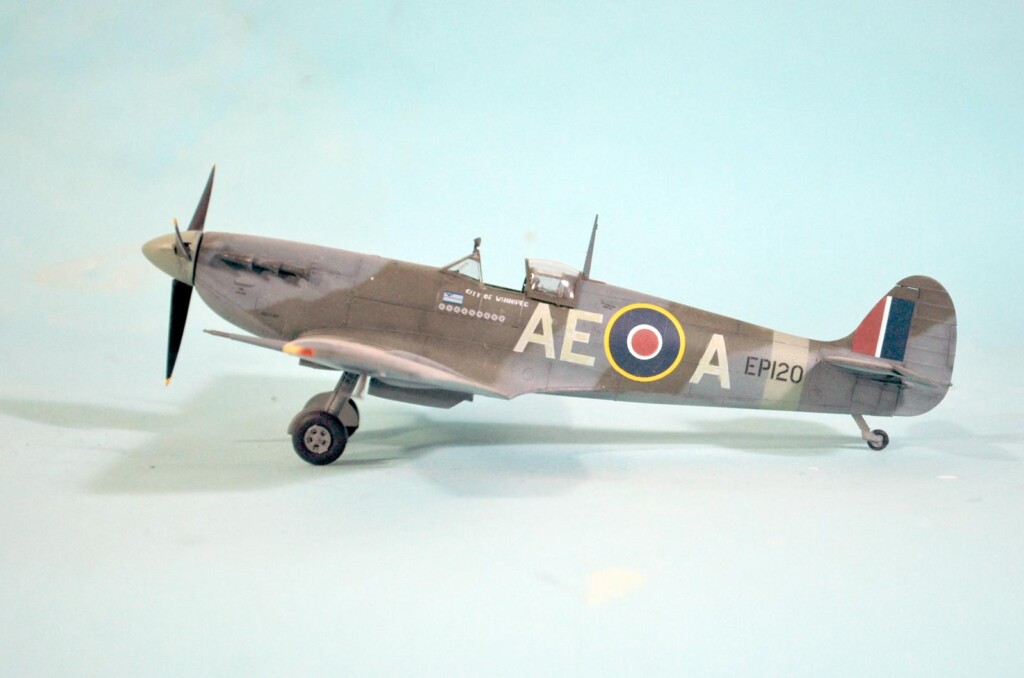
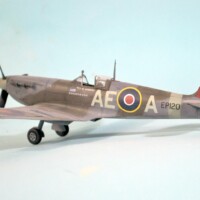
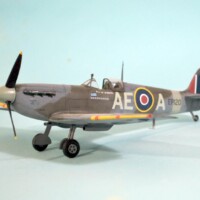
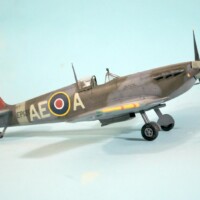
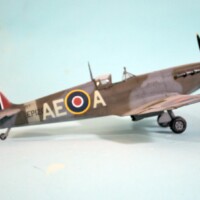
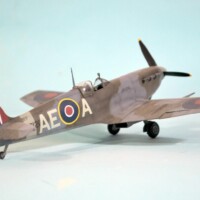
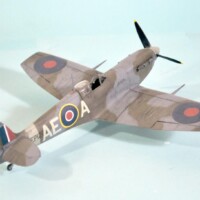
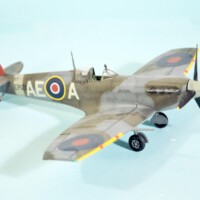
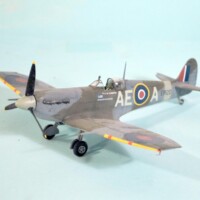
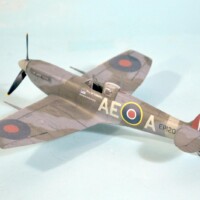
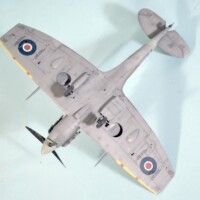
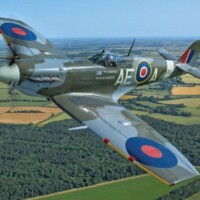
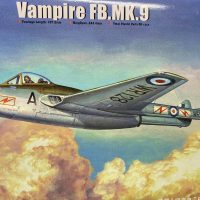
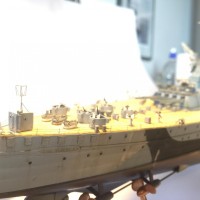

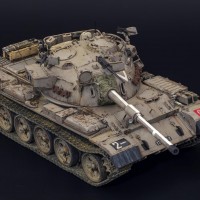
Another great article Tom. Any idea as to what year Eduard started messing around with their decals?
I have no problem with their decals. I use Solvaset, and they go down just like they always did. This whole peel-off thing is, in my not-so-humble opinion, horse pucky. I have yet to hear anyone do it without a problem, and for me that last place I want a problem is after I've done assembly, painting and decals and am rounding the final turn and heading for the finish line. I just use them like decals.
Nice work, Tom. I did that plane using the Hasegawa kit and Eagle Strike (I think) decals years ago.
Don't ever put that model next to one made from these kits. 🙂
I didn't really realize how many problems were in that kit until I raided the Gartex Spitfire floatplane kit, which uses the Hasegawa kit, and compared the two while figuring out how to make the Eduard floatplane I did.
Yes. It looks fine on its own but looks a bit underscale next to a Tamiya, Airfix, or Eduard Spitfire. What really blows my mind is that the Hasegawa and Tamiya Spits have been around for 30 years now.
Amazing job, Tom! Yet another wonderful Spitfire!
Very nice result, Tom @tcinla
Interesting history part of this aircraft which is great to see in airworthy condition.
Excellent result - I fully agree with the comments about the precision of the fit,
Another beauty TC @tcinla. I gotta get one of these.
Be careful! They're like what Hemingway said about cats: "Having one leads to another." 🙂
So I’ve noticed.
Great article. My Dad was handed these with 32Sq in Greece after 243 was disbanded having had Spit IX's. Greece was no longer "Front Line" I guess.
If he got one of these with the low-level blower and engine, this variant of the Spitfire Vb could outperform a Mk. IX below 10,000 feet. If they were in Greece, there wasn't a lot of high-altitude combat.
No combat I think in late 1944! Policing the Civil War. Best log book entry "Great fun beating up HMS Ajax in Salonika Harbour".
Nice job, Tom. I like those clipped wing Spits.
Amazing job, Tom! The clip wing Spitfires looks great!
Super build, Tom!
Great build and painting!
Tom Cleaver (@tcinla)
These clipped wing Spitfires are among my favorite. The very early Merlin powered Marks are the "bees knees" in my opinion as far as aesthetics are concerned, so this model of yours is a win / win in my book. You did a very nice job with it.
I took your advice and scored several of these early Eduard Spitfires. They do indeed look very nice right out of the box and I don't really see a need for anything aftermarket with them. When I eventually get around to building them up, I will follow your building methods, keeping them in mind.
The story behind the build about the pilot, and how the original plane was saved / restored, was a nice read too, like icing on the cake.
I definitely pressed the "like" button.
Thanks!
Another great story and build, Tom (@tcinla). I have a couple of these in my stash that I will build someday. Thanks for providing a great blueprint for the build.
Watch out, they're like cream-filled chocolate eclairs. 🙂
Another one for your ever enlarging spitfire Collection !
Always great to read you.
That is how a spitfire should look.
An excellent result.
Thanks for posting Tom, I thought the seats were bakelite, accounting for the brown colour. I believe Gladiator instrument panels used bakelite elements which gives a nice colour contrast. We didn't build Spitfires in Gloucester, they were about 50 miles up the road in Birmingham. We built Hurricanes and Typhoons, mostly. Best wishes.